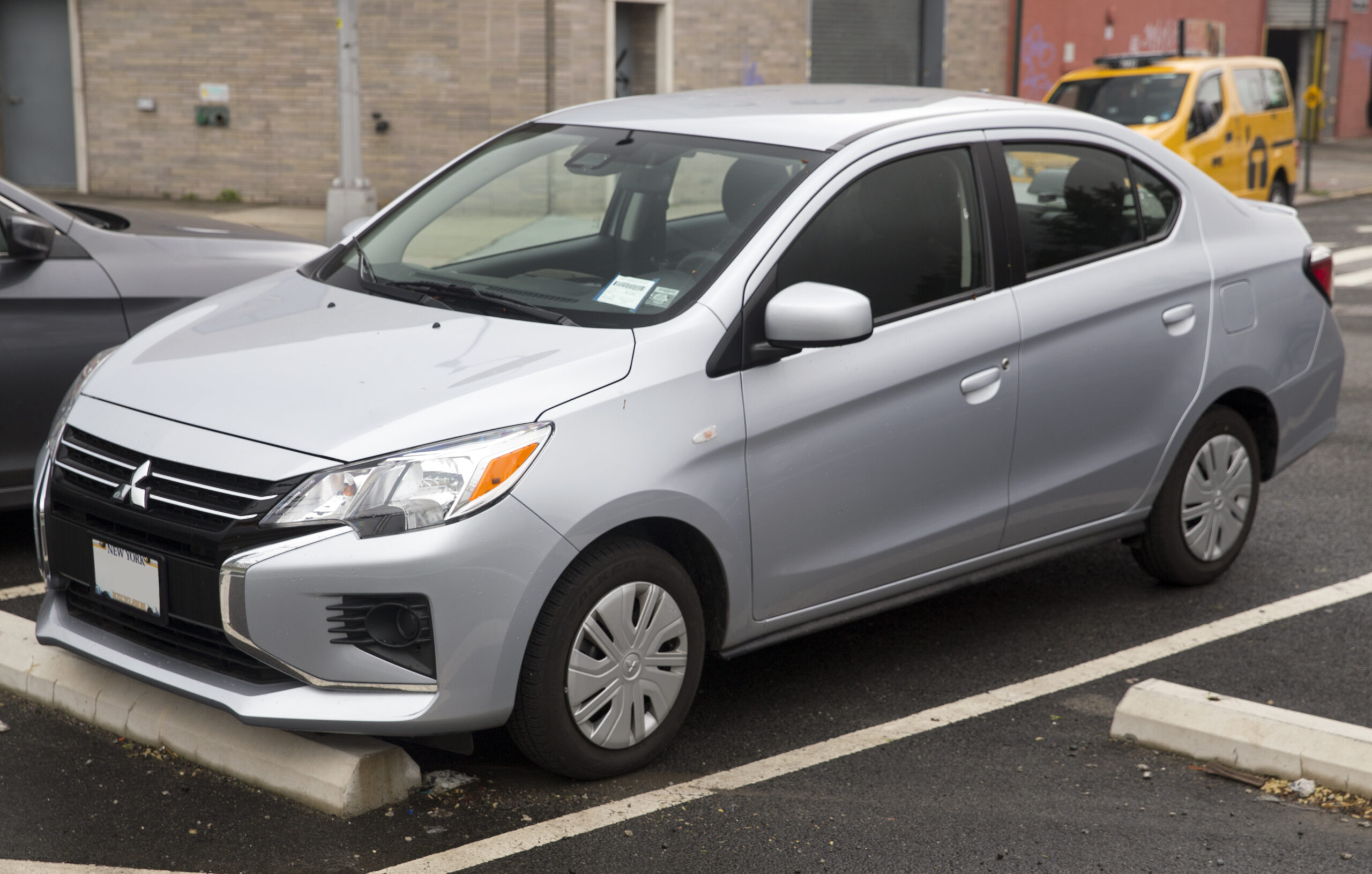
There’s arguably nothing more unsettling on the road than seeing another vehicle’s headlights looming large in your rearview mirror, its driver seemingly glued to your bumper. This common scenario, known as tailgating, is far more than just a minor annoyance or a test of patience; it represents a serious and often underestimated safety hazard that puts everyone on the road at considerable risk. It removes the crucial stopping distance needed to react safely to sudden changes in traffic, making a collision a terrifyingly real possibility.
Most motorists have unfortunately encountered the irritation of another vehicle following far too closely. This perilous behavior is frequently employed to pressure drivers ahead to shift out of the way, yet it places both parties at considerable risk. Given the inherent dangers and the stress it causes, it’s perfectly reasonable that many drivers won’t be certain how to handle being tailgated. Applying the brakes might trigger a crash, while pulling over to allow them past may not always be feasible or safe.
However, a driving instructor has outlined straightforward, expert-backed methods to deal with tailgaters safely and effectively, eliminating the need for sudden, risky braking. In this comprehensive guide, drawing on insights from driving experts and road safety authorities, we’ll unpack twelve essential strategies that empower you to regain control, ensure your safety, and navigate these challenging situations like a seasoned pro. By adopting these practical, actionable tips, you can transform a stressful encounter into a managed situation, protecting yourself and others on the highway.

1. **The Pro’s Primary Solution: Creating a Safe Buffer Zone Ahead**: The fundamental and most effective strategy recommended by driving experts, such as Annie Winterburn of Spot On Driving, to safely deal with a tailgater is surprisingly simple yet profoundly impactful: proactively increasing the gap between your car and the vehicle in front of you. This isn’t just about personal comfort; it’s a strategic maneuver that provides a critical safety buffer, directly mitigating the risks posed by the aggressive driver behind you.
By leaving a bigger gap ahead, you grant yourself significantly more time and space to react to any sudden changes in the traffic flow ahead. Should the vehicle in front of you brake abruptly, you can decelerate smoothly and gradually, rather than slamming on your brakes. This controlled reduction in speed then provides the tailgating motorist behind you with ample time to react and slow down safely as well, preventing a dangerous rear-end collision.
Annie Winterburn explicitly states: “If the car behind is too close to you and you have to brake suddenly, that car behind you will crash into the back of you. So you have to make sure you don’t have to brake suddenly.” This underscores the core principle that by managing the space *in front* of you, you indirectly manage the risk *behind* you. It shifts the burden of sudden braking from your shoulders, effectively giving the tailgater the time they desperately need, whether they realize it or not.
This simple, yet often overlooked, trick is a cornerstone of defensive driving. It acknowledges that while you cannot control the actions of the driver behind you, you can absolutely control your own driving environment and, crucially, your ability to react safely. Implementing this advice immediately provides a tangible improvement in road safety when facing an aggressive or unaware tailgater.

2. **Adapting Your Following Distance: The 2, 4, and 20-Second Rules**: Building upon the principle of maintaining a safe gap, driving experts and official guidelines provide specific, actionable rules for varying road conditions. The ‘two-second rule’ is widely recognized as the minimum safe following distance under ideal conditions, but this needs to be dynamically adjusted based on the environment. Understanding and applying these variations is crucial for comprehensive road safety.
On dry roads, the standard recommendation is to maintain at least a two-second time gap between your car and the vehicle in front. To measure this, pick a fixed object on the road – a signpost, a tree, or an overhead bridge – and when the vehicle ahead passes it, begin counting “one one-thousand, two one-thousand.” If you reach the same object before you finish counting, you are following too closely and need to increase your distance.
However, road conditions are rarely consistently ideal. Annie Winterburn emphasizes that this crucial gap must be doubled to four seconds on wet roads. The reduced traction from rain or standing water significantly increases braking distances, making the extra time essential for safe deceleration. Ignoring this adjustment dramatically escalates the risk of skidding and collisions.
The most extreme adjustment comes for icy roads, where the recommended gap multiplies tenfold to a staggering twenty seconds. This vast increase reflects the extremely low friction and vastly extended braking distances on ice. Attempting to maintain typical following distances on icy roads is an invitation to disaster. Adhering to these dynamic rules provides a robust framework for safe following, irrespective of the weather, giving both you and the tailgater behind you the best chance to react safely.

3. **The Power of Calm: Why Emotional Control is Your First Defense**: When confronted with a tailgater, a natural human instinct might be to panic, get angry, or feel intimidated. These emotional responses, while understandable, are counterproductive and can significantly impair your judgment, making an already dangerous situation even worse. The first and arguably most critical step in dealing with a tailgater safely is to remain calm and maintain emotional control.
Allowing emotions such as nervousness or anger to dictate your actions can lead to impulsive and risky maneuvers, such as sudden braking or accelerating aggressively. Such reactions not only escalate the tension but can also directly contribute to an accident. Instead, take a couple of deep breaths and consciously put your emotions aside for the time being. This ensures you remain in control of your vehicle and your decision-making process.
Maintaining a calm demeanor allows you to focus solely on the road and the safest course of action. If necessary, turn down or even turn off your radio to minimize distractions and help you concentrate. Your primary objective should be to remove yourself from the precarious situation safely, and a clear, unclouded mind is your most valuable tool in achieving this. Your ability to stay calm directly impacts your ability to drive defensively and make rational choices.
This emotional discipline is not about ignoring the threat, but about processing it constructively. By managing your own psychological state, you prevent the tailgater’s aggressive behavior from infecting your driving, keeping you safer and more capable of executing the other strategies discussed.

4. **Giving Way Gracefully: How to Safely Allow Tailgaters to Pass**: Sometimes, the simplest solution to a tailgating problem is to remove the obstacle – you – from the tailgater’s path. While it might feel like giving in to aggression, safely allowing a tailgater to pass is often the most effective and least confrontational method to resolve the situation and reduce risk for everyone involved. This requires a deliberate and courteous approach, particularly on different types of roads.
On multi-lane roads, a fundamental rule of driving etiquette and safety is to keep to the right-most lane unless you are actively passing another vehicle. By adhering to this, you leave the other lanes available for faster traffic, including potential tailgaters, to pass you without hindrance. This proactive measure can often prevent tailgating from even starting. If you find yourself being tailgated while in a passing lane, it’s safest to complete your pass and then move back to the right as soon as it’s safe to do so.
If you’re on a single-lane road, or if moving to another lane isn’t an option, consider pulling over to the side of the road when it’s safe and practical. Signal your intention well in advance, and gently move onto the shoulder or into a designated slow traffic pull-out spot, allowing the tailgater to proceed. Always ensure the shoulder is wide enough and the area is safe for stopping before doing so. If the area allows, you can even pull into a parking lot and remain there until the tailgater has passed. Remember, your safety is paramount, and letting them pass reduces the immediate threat.
In situations on winding or curving roads where passing lanes are scarce, and you encounter a straight section where passing is allowed, it’s wise to slightly slow down. This provides the tailgater with a clear, safe opportunity to overtake you before the road becomes more challenging again. You can even move over slightly to signal to the car behind you that they’re welcome to pass, though always with caution and full awareness of your surroundings. This thoughtful approach defuses tension and creates a safer flow of traffic.

5. **Consistency is Key: Maintaining a Steady and Predictable Speed**: An inconsistent driving speed can inadvertently contribute to tailgating, as it makes it difficult for other drivers, including those behind you, to judge your movements and safely plan an overtake. Therefore, a crucial tactic in dealing with tailgater situations, or even preventing them, is to maintain a constant and predictable speed.
If your speed fluctuates significantly—slowing down unexpectedly and then speeding up—the driver behind you might become frustrated or feel that it’s unsafe to attempt to pass you. This can lead them to stick closer, hoping for a consistent opportunity that never quite materializes. By driving at a steady pace, you provide the tailgater with a stable reference point, allowing them to better assess when and how they can safely pass you.
This doesn’t mean you should speed up to match an aggressive driver’s desired pace. As the context emphasizes, you should not force yourself to travel faster than you feel safe doing. Speeding up to appease a tailgater is usually only a temporary fix, as they are likely to speed up as well, closing the gap once more but now at a higher, potentially more dangerous, speed. The goal is not to escape them by accelerating but to maintain a safe and comfortable speed based on road conditions and legal limits.
Using cruise control, if your car is equipped with it and conditions are suitable, can be an excellent way to ensure speed consistency. This removes the variable of your foot pressure, providing a smooth and predictable journey. By eliminating speed inconsistency, you remove a potential trigger for tailgating and give the following driver the best possible chance to move around you safely, without further aggravating the situation.

6. **The Pitfalls of Provocation: Why You Should Never Tap Your Brakes**: When a driver is aggressively tailgating, the instinct to ‘teach them a lesson’ or to signal your displeasure by tapping your brake pedal might arise. While seemingly a logical way to make your brake lights flash and encourage them to back off, this action is highly dangerous, generally ineffective, and strongly advised against by driving experts and safety authorities alike. It can escalate road rage and create even more hazardous situations.
Deliberately tapping on the brake pedal, or ‘brake checking’, carries significant risks. Firstly, the driver behind you might not be paying full attention, and a sudden flash of brake lights could cause them to panic and slam on their own brakes, potentially initiating a chain reaction accident involving multiple vehicles. This is a direct risk that transforms a tense situation into a probable collision, with serious consequences.
Secondly, if the tailgater is aggressive or has a propensity for road rage, they might interpret your brake tap as a challenge or an act of aggression. This could inflame their emotions further, leading to even more dangerous driving behavior, such as retaliatory actions or increased harassment. It’s never up to you to ‘teach other people how to drive’; such actions are based purely on emotion and can result in an accident that could ultimately be your fault, or at least severely complicate liability.
Moreover, if you frequently tap your brakes without genuine need, the driver behind you may begin to ignore your brake lights, perceiving them as false alarms. Then, should you need to brake for a real hazard, they might not react at all, leading directly to a collision. The expert advice is clear: avoid braking suddenly or slowing down unnecessarily. Focus on the road ahead and your own safe driving, rather than attempting to control or punish the driver behind you through provocative means. Remember, your safety and avoiding an accident are the paramount concerns.

7. **Unpacking the Psychology of Tailgating: Understanding the Driver Behind**: While defensive maneuvers are crucial, a deeper understanding of why drivers tailgate can empower you to respond more effectively and less emotionally. Tailgating isn’t always malicious; it can stem from various underlying causes, including simple impatience, aggressive tendencies, or a surprising lack of awareness regarding proper driving etiquette. Recognizing these potential motivations helps shift your perspective from feeling personally targeted to addressing a dangerous driving pattern.
Some drivers, for instance, might genuinely feel that you are driving too slowly for the prevailing conditions or their perceived “need for speed.” Others might be experiencing road rage, using close following as a deliberate tactic to intimidate or pressure you. Then there are those who are simply oblivious to the significant dangers of tailgating, perhaps just following the flow of traffic without adequately judging safe distances, especially if they are distracted or inexperienced.
Understanding this spectrum of motivations can significantly influence your response. Instead of succumbing to anger, panic, or a desire for retaliation, you can remain calm and maintain a focused, strategic approach to the situation. This means consciously choosing to keep your eyes on the road, assess the safest course of action, and remember that controlling your own vehicle and emotions is your most powerful tool, regardless of the tailgater’s intent.
If you ever feel genuinely threatened or fear you are being deliberately followed, never drive directly home. This crucial piece of advice protects your personal safety beyond the road. Instead, steer towards a busy, well-lit area with many people, such as a police station, a supermarket car park, or a gas station. Your safety is paramount, and a calm, prepared mind is your best defense in all situations.




